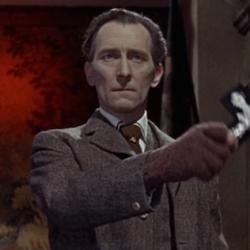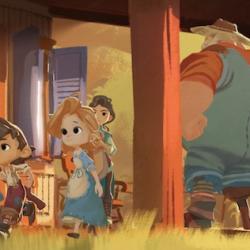Some thoughts on Claude Berri’s beautiful and provocative 1986/1987 films Jean de Florette and Manon of the Springs .
1. The story is a reverse Oedipus tale, focusing on how Cesar Soubeyran(Yves Montand) ruins and kills his own son (Jean, played by Girard Depardieu) without knowing it is his son. The Oedipus allusions are made fairly explicit. A blind woman tells him that the hunchback is his son, and the preacher at the church service refers to the Oedipus myth, comparing the loss of water in the village to the plague of Thebes and calling the sinner responsible to confess it.
2. There are important Girardian elements. Jean is an outsider, treated with contempt because he is not from the village and because he is a hunchback. Manon (Ernestine Mazurowna) is an outsider throughout the second film, living in the hills and watching her goats. Yet she is not considered a curse but a blessing; everyone wants her to pray for water. As Girard says, the scapegoat ends up being the savior, and thus treated as “semi-divine.” People pray to the now-dead Jean several times in the second film. At the end Manon is married to the teacher (another outsider) but they become integrated into the village.
3. There’s some hint of Christ imagery: Jean is the “savior” of the Soubeyran family of which Ugolin (Daniel Auteuil) is believed to be the last, yet the savior is unrecognized and killed by the very people whom he came to save. He comes to his own, but his own knew him not. Manon is pregnant at the end, and leaves a church service to have the baby — and it seems to be a Christmas mass.
4. Water imagery is used throughout, and the struggles of the films are largely about control of water. Water permits Jean to grow his garden and lack of water kills his garden. Manon cuts off the water supply to the city, and the city begins to die. She “saves” the city by opening the spring back up. This happens after Ugolin has confessed his crime and killed himself, so the death of the guilty brings new life to the village.
Water is also the stream of descendents of Sabeyard: Cesar blocks up the spring on Jean’s property, and this kills his heir, blocking the spring means killing the hopes of the family. When Manon blocks the spring, it leads to Ugolin’s death: again, blocking the spring means cutting off the stream of descendents. After she unblocks the spring, it is revealed that she is a Soubeyran, and the stream of descendents can continue. A blocked spring also refers to virginity; after Manon unblocks the spring initially, the teacher passionately kisses her, and shortly after they are married. She goes from being walled to being a fountain of life.
Ugolin makes a living selling flowers for funerals. He uses water to bring death in the first film, and makes a living with his water from the deaths of villagers.
5. Jean raises rabbits. The final line of the first film refers to the rabbits: After Cesar hears Manon scream, he says “It’s just a buzzard killing a rabbit.” He’s the buzzard, Jean (and Manon) are the innocent, helpless rabbits. In the second film, Ugolin hunts rabbits (maybe one of Jean’s released into the wild) as he pursues Manon as his wife.
7. There is a structuralist contrast of nature and civilization. Jean is from the city, does everything “by the book.” The country people live according to unwritten traditions. The teacher is also book-educated, and so is Manon. Yet Manon is the best of both worlds: She is book educated yet always in the countryside looking after her goats. The teacher is book-educated but is learning about the hills. The rural expert comes speaking a language none of the villagers understand and he can’t help a bit.














